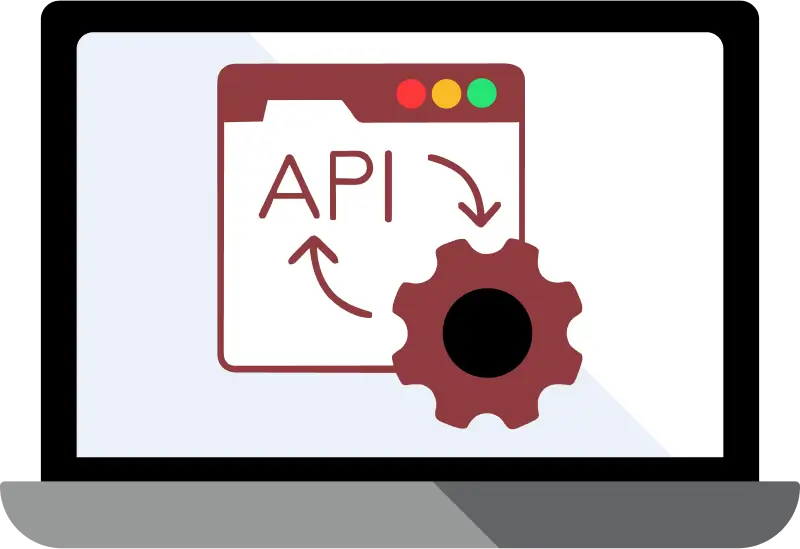What is MongoDB Deep Populate?
API Maker's MongoDB Deep Populate revolutionizes how developers manage complex data relationships across multiple database systems. Unlike MongoDB's native $lookup or Mongoose's populate, which are limited to a single MongoDB instance, Deep Populate enables seamless querying across MongoDB and relational databases like MySQL, PostgreSQL, Oracle, SQL Server, MariaDB, TiDB, and Percona XtraDB in a single API call. This delivers unified, structured responses, making it ideal for dashboards, microservices, and enterprise applications.
Deep Populate extends MongoDB’s querying capabilities by fetching related data from different database engines, combining MongoDB’s flexible document structure with the structured reliability of SQL databases. This eliminates the need for complex backend orchestration, delivering nested data in a single, elegant API response.
Quick Start: Setting Up Deep Populate
Requirements
- API Maker project configured
- MongoDB instance connected
- Related database instances (SQL or NoSQL)
- Defined schemas (recommended for optimal performance)
Schema Creation for Deep Populate
A well-defined schema in API Maker organizes data and enhances Deep Populate efficiency by mapping relationships across databases without additional JSON wrappers.
Example Schema (MongoDB products Collection)
{
"collection": "products",
"fields": {
"_id": { "type": "objectId", "validations": { "required": true } },
"name": { "type": "string", "validations": { "required": true } },
"price": { "type": "number" },
"category": { "type": "string" },
"manufacturer_id": {
"type": "string",
"instance": "mysql",
"database": "inventory",
"collection": "manufacturers",
"column": "id"
}
}
}
Why It Works
The manufacturer_id field embeds join configuration (instance, database, collection, column), enabling seamless cross-engine joins. API Maker automatically handles data type conversions (e.g., ObjectId to integer) when querying via /api/schema/mongo/.... See the official schema documentation for details.
Using Deep Populate with MongoDB
Deep Populate supports various HTTP methods to fetch or update data across databases with MongoDB as the core.
GET Request Example
Fetch products and their latest purchase records from a MySQL database:
Request
GET /api/schema/mongo/shop/products?find={"status":"active"}&deep=[{
"s_key": "id",
"t_instance": "mysql",
"t_db": "store",
"t_col": "purchases",
"t_key": "product_id",
"isMultiple": true,
"select": "order_id,quantity,status",
"find": {"status": "completed"},
"limit": 5
}]
Response
{
"name": "Smartwatch",
"category": "Wearables",
"purchases": [
{ "order_id": 321, "quantity": 2, "status": "completed" },
{ "order_id": 322, "quantity": 1, "status": "completed" }
]
}
Post Request Example
Update products with nested purchase data:
Request
PUT /api/schema/mongo/shop/products
Content-Type: application/json
{
"id": "abc123",
"name": "Smartwatch",
"deep": [
{
"s_key": "id",
"t_instance": "mysql",
"t_db": "store",
"t_col": "purchases",
"t_key": "product_id",
"find": { "status": "completed" },
"select": "order_id,status",
"isMultiple": true,
"limit": 3
}
]
}
Response
{
"status": "updated",
"product": {
"id": "abc123",
"name": "Smartwatch",
"purchases": [
{ "order_id": 2001, "status": "completed" },
{ "order_id": 2002, "status": "completed" }
]
}
}
This same format can be used to fetch data from any database within API Maker with MongoDB as the main database.
Core Fields in Deep Populate
| Field | Description |
|---|---|
s_key |
Source field (MongoDB) to match |
t_key |
Target field (related DB) to join to |
t_instance |
Target database instance |
t_db |
Target database name |
t_col |
Target table/collection |
find |
Filter for target data |
select |
Fields to include from target |
isMultiple |
Return multiple matches as an array |
limit |
Limit number of nested results |
See Core Fields Documentation.
Single-Level vs. Multi-Level Deep Populate
Single-Level Deep Populate
Best for fetching one related entity per document.
Request Example
GET /api/schema/mongo/shop/cities?find={"active":true}&deep=[
{
"s_key":"state_id",
"t_instance":"oracle",
"t_db":"geo",
"t_col":"states",
"t_key":"id",
"find":{"state_name":"GUJARAT"},
"isMultiple":false,
"select":"state_name,id",
"limit":5
}
]
Response
[
{
"id": "64f1a8ef92",
"city_name": "AHMEDABAD",
"state_id": {
"id": 2101,
"state_name": "GUJARAT"
}
},
{
"id": "64f1a8ef93",
"city_name": "SURAT",
"state_id": {
"id": 2101,
"state_name": "GUJARAT"
}
}
]
Details
- Source:
citiescollection (MongoDB). - Goal: Fetch each city’s state from an Oracle database.
- How: The
deeparray linkss_keytot_key. - Optimization: Use
selectandlimitfor faster responses.
Multi-Level Deep Populate
Ideal for hierarchical relationships (e.g., City → State → Country).
Request Example
GET /api/schema/mongo/shop/cities?find={"active":true}&deep=[
{
"s_key":"state_id",
"t_instance":"oracle",
"t_db":"geo",
"t_col":"states",
"t_key":"id",
"select":"state_name,country_id",
"isMultiple":false,
"deep":[
{
"s_key":"country_id",
"t_instance":"mysql",
"t_db":"inventory",
"t_col":"countries",
"t_key":"id",
"select":"country_name",
"isMultiple":false
}
]
}
]
Response
{
"id": 101,
"city_name": "AHMEDABAD",
"state_id": {
"id": 201,
"state_name": "GUJARAT",
"country_id": {
"id": 301,
"country_name": "INDIA"
}
}
}
Details
- Chained Joins: Nested
deeparrays define each join level. - Cross-Engine: Links MongoDB (cities) to Oracle (states) to MySQL (countries).
- Flexibility: Supports unlimited nesting, though 3–4 levels are recommended for performance.
Summary
| Level | Use When | Best For | Example Chain |
|---|---|---|---|
| Single-Level | One related record | Simple joins (e.g., State ↔ City) | cities → states |
| Multi-Level | Nested data from multiple tables | Hierarchical views | cities → states → countries |
Supported Databases
Deep Populate integrates MongoDB with:
- MySQL
- PostgreSQL
- Oracle
- SQL Server
- MariaDB
- TiDB
- Percona XtraDB
Use these interchangeably in t_instance.
Benefits of Pairing MongoDB with Relational Databases
Pairing MongoDB’s flexible document model with relational databases creates a powerful, scalable data ecosystem. MongoDB excels at dynamic, unstructured data, while relational databases ensure structured, transactional reliability.
- MySQL / MariaDB: Handles orders, inventory, or sessions with fast transactions, while MongoDB manages flexible product catalogs or event logs. Ideal for e-commerce or user systems.
- PostgreSQL: Offers robust querying and indexing for analytics, blending structured data with MongoDB’s documents for real-time insights.
- Oracle: Supports enterprise auditing and compliance, linking to MongoDB’s adaptable storage for scalable solutions in finance or healthcare.
- SQL Server: Integrates with Microsoft systems for CRM or billing, paired with MongoDB for dynamic data flexibility.
- TiDB: Scales globally for finance or telemetry, complementing MongoDB’s schema-less design for high-performance apps.
- Percona XtraDB: Optimized for logging and analytics, paired with MongoDB for efficient, real-time data processing.
- MongoDB (Base): Enables rapid development with flexible schemas and high write speed, perfect for content management, IoT, or real-time apps.
This combination supports fast, adaptable applications for analytics, compliance, and more.
Database Capability Comparison
| Capability | API Maker (Deep Populate) | Supabase | Firebase (Firestore) | Appwrite |
|---|---|---|---|---|
| Native MongoDB Support | Yes (first-class integration) | Not supported (PostgreSQL only) | Not supported (proprietary NoSQL) | Not supported (MariaDB; Mongo beta) |
| Cross-Table/DB Population | Nested joins across MongoDB, MySQL, etc. | Only PostgreSQL joins | No joins; client-side merges | Limited relationship querying |
| Multi-Level Nesting | Unlimited depth | One-level joins | Not supported | Up to three levels (unreliable) |
| JSON-Defined Deep Queries | Yes, via { deep: [...] } |
Requires SQL or SDK calls | Requires manual fetch | Manual relationship mapping |
| MongoDB ↔ SQL Joins | Fully supported | Not supported | Not supported | Not supported |
| Caching & Performance | Automatic batching and optimization | PostgreSQL-only caching | Client-side caching | Basic caching; no relational cache |
Best Practices
- Index
s_keyandt_keyfor faster joins. - Use
selectto reduce payload size. - Apply
limitandsortfor paginated nested data. - Enable caching for static cross-database lookups.
FAQs
Can I use Deep Populate without schemas?
Yes, via /api/gen/..., but schemas improve performance and validation.
What if a target database is offline?
API Maker returns primary documents with null or empty nested fields, with errors in the errors field.
How many nesting levels are supported?
No strict limit, but 3–4 levels are optimal for performance and readability.
Does Deep Populate support ObjectId joins?
Yes, API Maker automatically converts ObjectId for SQL or other types if defined in the schema.
Can I paginate nested results?
Yes, use limit and skip in the deep object for pagination, especially with isMultiple: true.
How does Deep Populate differ from MongoDB’s $lookup?
$lookup is limited to MongoDB; Deep Populate works across SQL and NoSQL databases.
Does Deep Populate support streaming APIs?
Yes, API Maker supports streaming for large isMultiple datasets.
Is caching enabled?
Yes, configurable at the API or collection level for better performance.
How can I test Deep Populate requests?
Use the API Maker Test Console, Postman, cURL, or JavaScript (fetch/axios).
Learn More
MongoDB Deep Populate unifies your data stack, delivering documents and relational data in one efficient response.



